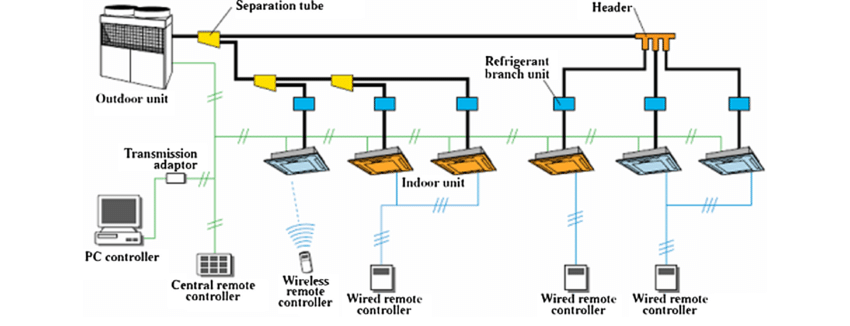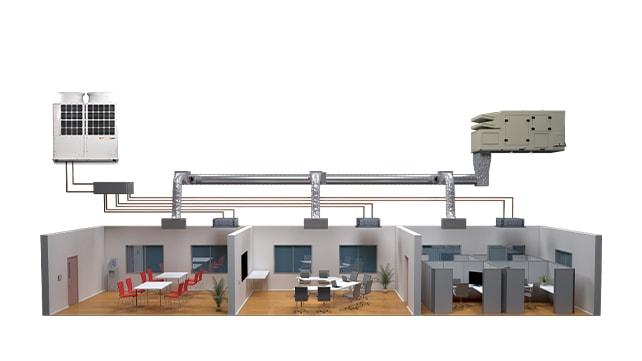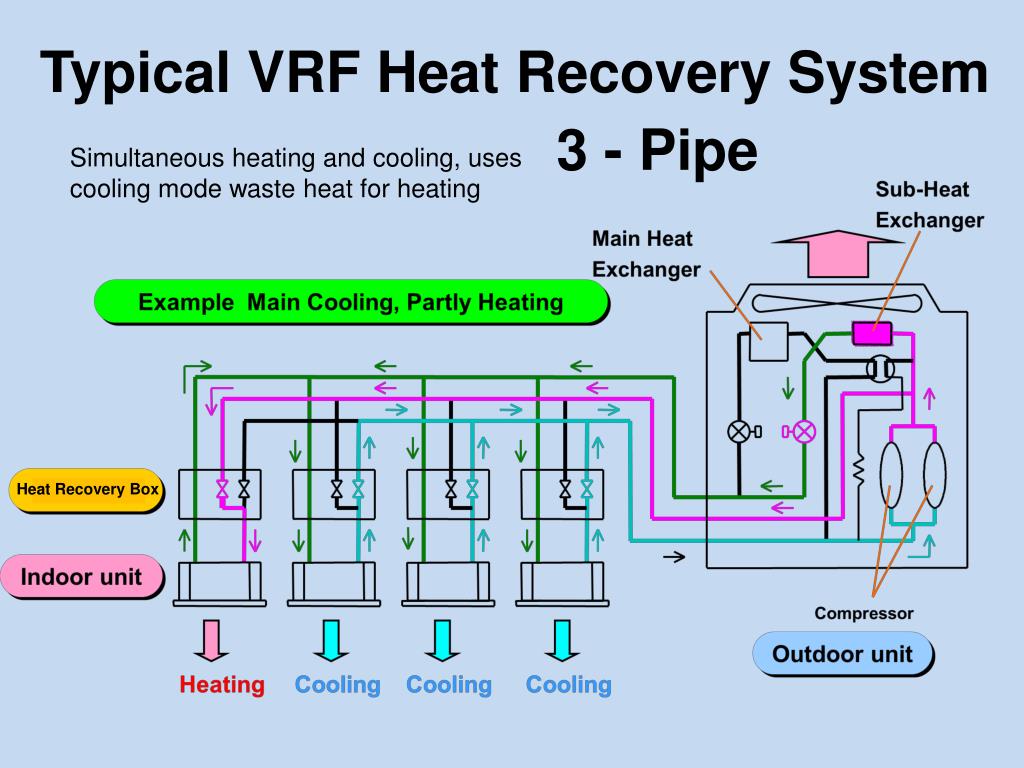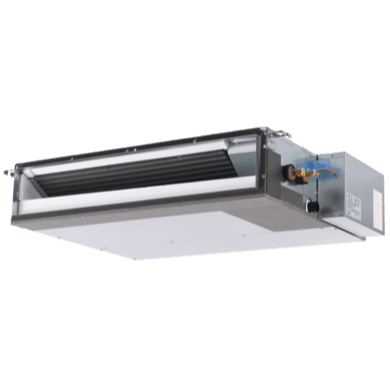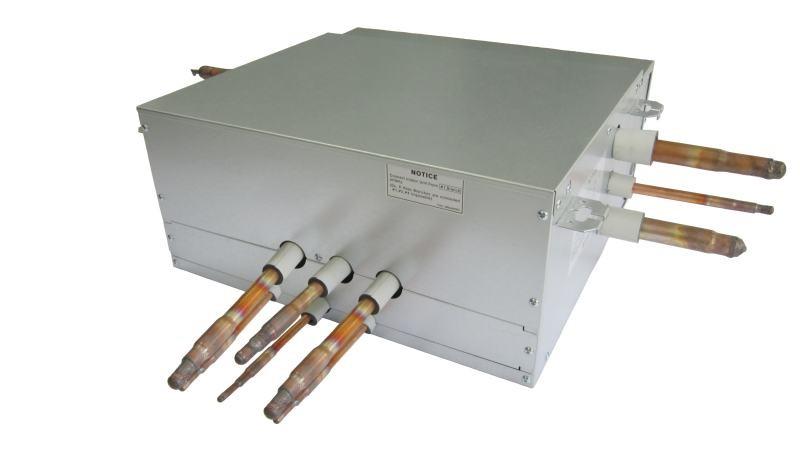📘 Variable Refrigerant Flow (VRF) Systems
Variable Refrigerant Flow (VRF) systems are advanced HVAC solutions that use refrigerant as the primary heating and cooling medium. These systems vary the flow of refrigerant to multiple indoor units based on demand, making them ideal for commercial and multi-zone applications. VRF systems are known for their energy efficiency, zoning flexibility, and quiet operation.
🔧 What is a VRF System?
VRF systems utilize a single outdoor condensing unit connected to multiple indoor units. Through inverter-driven compressors and precise control valves, they adjust refrigerant flow in real time to meet each zone’s specific load — heating or cooling — simultaneously in some systems.
VRF is also known as VRV (Variable Refrigerant Volume), a term trademarked by Daikin.
🧩 Components of a VRF System
1. Outdoor Unit
-
Houses inverter compressor(s)
-
Regulates refrigerant pressure and flow
-
Capable of simultaneous heating and cooling (in heat recovery systems)
2. Indoor Units
-
Multiple styles: wall-mounted, ceiling cassette, ducted, floor-mounted
-
Individual zone control
-
Connect via refrigerant lines, not ductwork
3. Refrigerant Piping Network
-
Two-pipe (heat pump) or three-pipe (heat recovery) systems
-
Long pipe lengths allow flexible design (up to 1000+ ft)
4. Branch Selector Boxes (for heat recovery)
-
Divert refrigerant to indoor units for heating or cooling
-
Enable simultaneous heating and cooling in different zones
5. Controls
-
Zone thermostats or wall controllers
-
Centralized or BMS integration for large systems
🔁 How It Works
-
The outdoor unit uses an inverter-driven compressor to modulate refrigerant flow.
-
Refrigerant is distributed via piping to various indoor units.
-
Each indoor unit independently controls its operation (on/off, fan speed, setpoint).
-
In heat recovery systems, refrigerant is redistributed for simultaneous heating and cooling.
📊 Types of VRF Systems
📈 Advantages
-
✅ High energy efficiency (part-load operation)
-
✅ Zoning flexibility and independent control
-
✅ Space-saving — no large ductwork required
-
✅ Quiet operation indoors and outdoors
-
✅ Long refrigerant pipe runs for flexible design
📉 Limitations
-
❌ High upfront cost
-
❌ Requires skilled installation and commissioning
-
❌ Not ideal for high ventilation load spaces
-
❌ Limited heating capacity in extreme cold (unless hybridized)
📷 Diagrams & Images
🔹 VRF System Layout
🔹 VRF Heat Recovery Operation
🔹 Indoor Unit Types
🛠️ Installation & Maintenance Tips
-
Ensure proper refrigerant charge and leak testing
-
Pipe insulation and slope are critical to system function
-
Use manufacturer-specific tools and software for commissioning
-
Clean indoor unit filters and check drain pans regularly
-
Update firmware in centralized control interfaces as needed
🏁 Summary
VRF systems offer precise, energy-efficient HVAC control for buildings with diverse zone requirements. Whether using heat pump or heat recovery configurations, their ability to adapt refrigerant flow to individual indoor units makes them one of the most flexible HVAC solutions available today.

